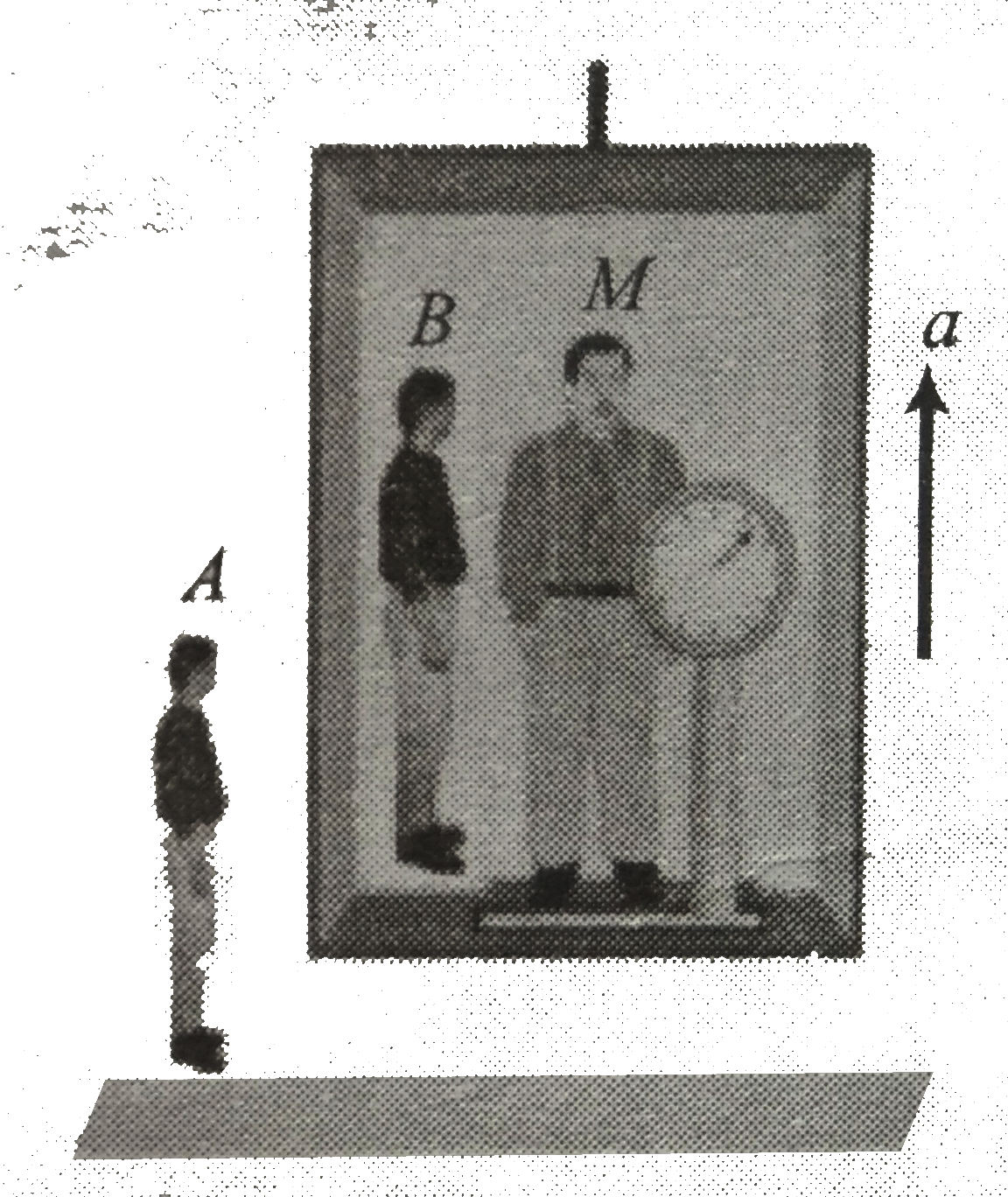A barometer kept in an elevator accelerating upward reads 76 cm. The air pressure in the elevator is
76cm
lt76cm
gt76cm
zero
The correct Answer is:C
To solve the problem of determining the air pressure in an elevator that is accelerating upward and reads 76 cm on a barometer, we can follow these steps:
Step 1: Understand the Barometer
A barometer measures atmospheric pressure by balancing the weight of a column of liquid (usually mercury) against the atmospheric pressure. The height of the mercury column (H) is directly related to the pressure exerted by the atmosphere.
Step 2: Use the Barometric Formula
Under normal conditions, the atmospheric pressure (P) can be expressed as:
P=ρgH
where:
- P = atmospheric pressure,
- ρ = density of mercury (approximately 13,600kg/m3),
- g = acceleration due to gravity (approximately 9.81m/s2),
- H = height of the mercury column (in meters).
Step 3: Adjust for Elevator Acceleration
When the elevator accelerates upward with an acceleration a, the effective acceleration due to gravity becomes:
geffective=g+a
Thus, the pressure reading in the barometer when the elevator is accelerating upward will be:
P′=ρgeffectiveH
Substituting geffective:
P′=ρ(g+a)H
Step 4: Relate the Two Pressures
Given that the barometer reads 76 cm of mercury when the elevator is accelerating, we can equate this to the height in the formula:
P′=ρ(g+a)(0.76m)
Step 5: Compare Pressures
The pressure inside the elevator (due to the upward acceleration) is greater than the normal atmospheric pressure. Therefore, we have:
P′>P
Where P is the normal atmospheric pressure (which corresponds to 76 cm of mercury).
Step 6: Conclusion
Since the barometer reads 76 cm in the accelerating elevator, the air pressure in the elevator is greater than the standard atmospheric pressure. Thus, we can conclude that the air pressure in the elevator is greater than the pressure corresponding to 76 cm of mercury.
Final Answer
The air pressure in the elevator is greater than 76 cm of mercury.
---
A barometer measures atmospheric pressure by balancing the weight of a column of liquid (usually mercury) against the atmospheric pressure. The height of the mercury column (H) is directly related to the pressure exerted by the atmosphere.
Under normal conditions, the atmospheric pressure (P) can be expressed as:
P=ρgH
where:
- P = atmospheric pressure,
- ρ = density of mercury (approximately 13,600kg/m3),
- g = acceleration due to gravity (approximately 9.81m/s2),
- H = height of the mercury column (in meters).
When the elevator accelerates upward with an acceleration a, the effective acceleration due to gravity becomes:
geffective=g+a
Thus, the pressure reading in the barometer when the elevator is accelerating upward will be:
P′=ρgeffectiveH
Substituting geffective:
P′=ρ(g+a)H
Given that the barometer reads 76 cm of mercury when the elevator is accelerating, we can equate this to the height in the formula:
P′=ρ(g+a)(0.76m)
The pressure inside the elevator (due to the upward acceleration) is greater than the normal atmospheric pressure. Therefore, we have:
P′>P
Where P is the normal atmospheric pressure (which corresponds to 76 cm of mercury).
Since the barometer reads 76 cm in the accelerating elevator, the air pressure in the elevator is greater than the standard atmospheric pressure. Thus, we can conclude that the air pressure in the elevator is greater than the pressure corresponding to 76 cm of mercury.
The air pressure in the elevator is greater than 76 cm of mercury.
Topper's Solved these Questions
Similar Questions
A barometer kept in an elevator reads 76 cm when it is at rest. If the elevator goes up with increasing speed, the reading will be
View SolutionA barometer kept in a stationary elevator reads 76cm. If the element starts accelerating up the reading will be
View SolutionA cubical block of density ρ is floating on the surface of water. Out of its height L, fraction x is submerged in water. The vessel is in an elevator accelerating upward with acceleration a. What is the fraction immersed ?
View SolutionA man of mass M stands on a weighing machine in an elevator accelerating upwards with an acceleration a. Draw the free-body diagram of the man as observed by the observer A (stationary on the ground) and observer B (stationary on the elevator). Also, calculate the reading of the weighing machine.

View SolutionThe pressure in a liquid at two points in the same horizontal plane are equal. Consider an elevator accelerating upward and a car accelerating on a horizontal road. The above statement is correct in
View SolutionA collision experiment is done on a horizontal table kept in an elevator. Do you expect a change in the results if the elevator is accelerated up or down because of the noninertial character of the frame?
View SolutionA man of mass m slides down along a rop which is connected to the celling of an elevator with deceleration a relative to the rop.If the elevator is going upward with an acceleration relative to the ground, then tension in the rop is
View SolutionWhen block hangs in air, the horizontal string vibrates in its tenth harmonic in unison with a particular tuning fork. When block is placed in elevator acceleration in downward direction, the same string vibrates in its eleventh harmonic with same tuning fork. What will be acceleration of elevator ?
_PHY_E06_324_Q01.png)
_PHY_E06_324_Q02.png)
View SolutionThe apparent weight of an object increases in an elevator while accelerating upward. A moongphaliwala sells his moongphali usinga beam balance in an elevator. Will he gain more if the elevator is accelerating up?
View SolutionTwo blocks of mass 5 kg and 3 kg are attached to the ends of a string passing over a smooth pulley fixed to the ceiling of an elevator. A man inside the elevator accelerated upwards, finds the acceleration of the blocks to be 932g. The acceleration of the elevator is
View Solution
